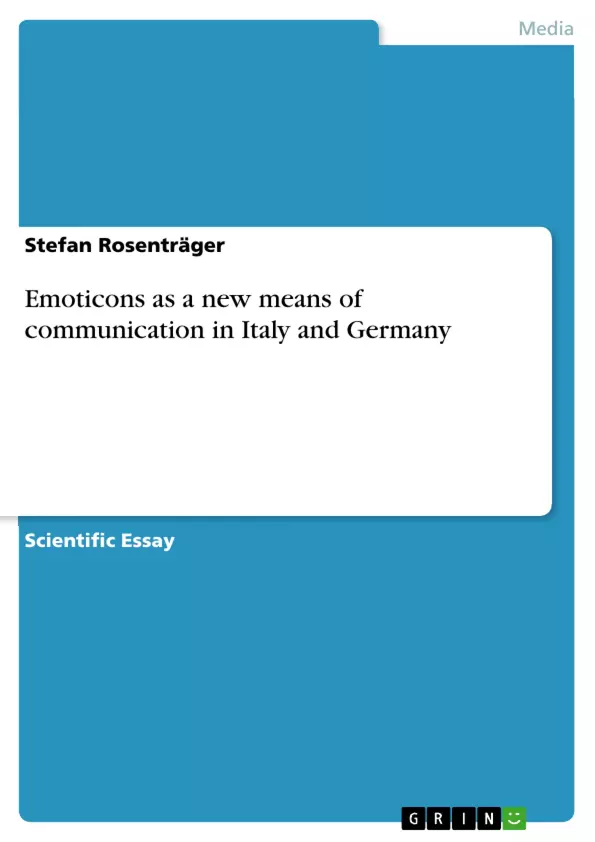The main objective of this term paper is to analyse the semiotic function of the emoticons and the way people use them to express their emotions. The special focus will be on the comparison between Germany and Italy. Are the cultural differences between these two countries noticeable even when you look at their use of smileys? How do Italians and Germans handle these semiotic devices? These are some of the questions that shall be analysed in the following.
Inhaltsverzeichnis (Table of Contents)
- I. Introduction
- II. What are Emoticons?
- II.1. Definition and semiotic classification
- II.2. Emoticons in the historic context
- III. Use of Emoticons in Germany and Italy
- IV. The speedup of communication channels and the necessity of Emoticons as short means of expression
- V. Chat language as an own type of language: The linguistic levelling of written and spoken language
- VI. Digression: Chatiquette - rules for the right communication behaviour on the internet
- VII. Conclusion
Zielsetzung und Themenschwerpunkte (Objectives and Key Themes)
This term paper aims to analyze the semiotic function of emoticons and how people utilize them to express their emotions, with a particular focus on comparing the use of emoticons in Germany and Italy. The study seeks to understand whether cultural differences between these two countries are discernible in their use of smileys.
- The semiotic function of emoticons
- The cultural impact on emoticon usage
- The evolution of emoticons in the context of communication channels
- The linguistic development of chat language
- The historical context of emoticons and their evolution
Zusammenfassung der Kapitel (Chapter Summaries)
- Chapter I. Introduction: This chapter introduces the concept of emoticons and their growing significance in modern communication. It emphasizes the importance of studying their semiotic function and how cultural differences influence their usage. The chapter also briefly explores the historical context of text characters and the emergence of emoticons.
- Chapter II. What are Emoticons?: This chapter delves into the definition and semiotic classification of emoticons. It examines the role of emoticons as a means of expressing emotions, drawing upon theories from philosophers like Susanne K. Langer. The chapter also distinguishes between smileys and emoticons, highlighting their distinct functions in written communication.
- Chapter II.1. Definition and semiotic classification: This section provides a detailed examination of the semiotic classification of emoticons, exploring the concept of qualisigns and their relationship to Peirce's theory of signs.
- Chapter II.2. Emoticons in the historic context: This section explores the historical roots of emoticons, challenging the assumption that they are a purely 20th-century invention. It delves into the "secondary motivation of typographical signs" and their tradition in pre-electronic times. The chapter cites examples from literature and explores the origins of the iconic "smiley" face.
Schlüsselwörter (Keywords)
The primary focus of this paper is on the semiotic function of emoticons, specifically within the context of online communication. Key themes include the comparison of emoticon usage between Germany and Italy, the cultural and linguistic impact of emoticons, and the historical evolution of these visual elements in digital communication. The paper also draws upon theoretical frameworks from semiotics and linguistics, referencing figures like Susanne K. Langer and Charles S. Peirce.
- Quote paper
- Stefan Rosenträger (Author), 2008, Emoticons as a new means of communication in Italy and Germany, Munich, GRIN Verlag, https://www.grin.com/document/91044



